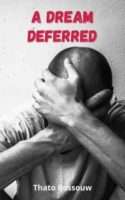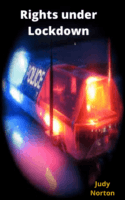Today, South Africa is celebrating Youth Day, remembering the heroic actions taken by the youth and students of June 16 1976 against the apartheid regime. This is the background to what happened.
During apartheid, South Africa’s education system was deliberately designed to keep Black people from challeging the authority and power of the whites.
The Bantu Education Act in 1953 by the Apartheid government aimed to create inequality: “Natives (blacks) [were to] be taught from an early age that equality with Europeans (whites) is not for them”, announced Dr. Verwoord, its chief architect.
There were not enough schools or qualified teachers for Black children. Classes were big, and the government spent much more on white children’s education – for each white student, R644 was spent annually, whereas for black a black student the amount was R42.
Then the Bantu Education Department decreed that some subjects – such as Maths and Social Science – should be taught in Afrikaans – which was a third language for most of the learners. This was partly done to try to entrench the status of Afrikaans as a language in the country, and also as a means of controlling Black students who were becoming more assertive about their rights.
Teachers raised their objections to the government announcement. Many black teachers made it clear that they were not fluent in Afrikaans. The students began to organise themselves into local cultural groups and youth clubs. Action Committes were formed by June 1976, as the students were beginning to be conscientised, and rejected the idea of being taught in the language of the oppressor.
During this time liberation movements were banned throughout the country and apartheid was at its peak.
The morning of June 16
About 10,000-20,000 black students walked from their schools to Orlando Stadium on the morning of June 16 1976 to a rally to protest against having to use Afrikaans as a language medium at school. The protest was supposed to be peaceful and was carefully planned for by the Soweto Students’ Representative Council’s (SSRC) Action Committee, with support from the wider Black Consciousness Movement. Teachers in Soweto also came to support the march after the Action Committee placed great emphasis on good discipline and peaceful action.
Police formed a wall facing the pupils, warning them to disperse, an order that was met with resistance. Teargas was fired into the crowd and police dogs were released. In the chaos, the students ran back and forth, throwing stones at the police and their dogs, who in turn fired more teargas.
The police then began to shoot live ammunition directly at the children. Twenty-three students were killed, one of the first being twelve year old Hector Peterson, whose photo has become the iconic symbol of June 16.
This deadly shooting by police on young people led to huge uprisings and street battles. Municipal offices as well as bottle stores and beer halls were targeted as official outposts of the state, and burnt. Many people joined in the grief and anger at the police and government actions, and by the third day the unrest had gained such a momentum that it spread to townships around Soweto and other parts of the country. By the end of the year about 575 people had died around the country, most of them at the hands of the police.
In many ways, this uprising was a turning point. The brutality of the apartheid state was condemned internationally. Many young people left the country to join the struggle against the South African government from outside. The government introduced some reforms, but also repressive legislation aimed at controlling and subduing people. The struggle continued both inside and outside the country, with the youth often playing a leadership role.
So on this day, forty years later, we recognise the bravery of those young people who were prepared to sacrifice their lives to get closer to the reality of a free South Africa.
***
Sources:
The June 16 Soweto Youth Uprising – Click here
Soweto Uprising – Click here




